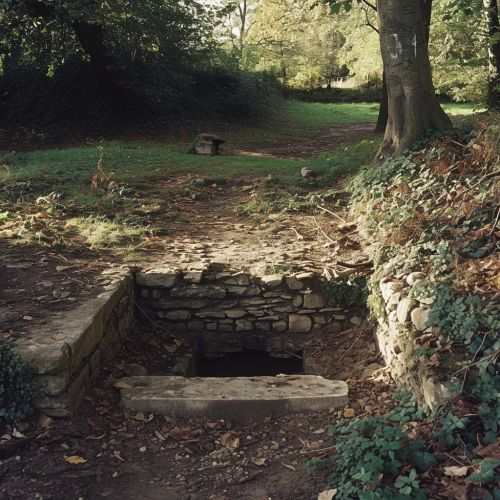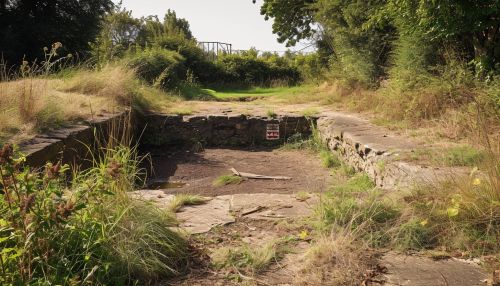Plague pits
Overview
Plague pits are mass graves in which victims of the Bubonic Plague were buried. These pits were commonly used during major outbreaks of the disease, particularly during the Black Death pandemic in the 14th century and the Great Plague of London in the 17th century. The pits were often hastily dug and filled with bodies, then covered over when full.


Historical Context
The bubonic plague, also known as the Black Death, was one of the most devastating pandemics in human history. It struck Europe in the mid-14th century, killing an estimated 25 million people, or approximately one-third of the continent's population. The disease was highly contagious and deadly, with victims often dying within days of infection. As the death toll rose, communities struggled to dispose of the bodies, leading to the creation of plague pits.
Characteristics of Plague Pits
Plague pits were typically located on the outskirts of towns and cities, away from populated areas. They were often dug in churchyards or other consecrated ground, but as the death toll rose, any available space was used. The pits were dug deep enough to accommodate multiple layers of bodies, which were often placed in the pit without coffins. Lime was frequently used to speed up decomposition and to help control the spread of the disease.
Discovery and Excavation
Many plague pits have been discovered and excavated by archaeologists. These excavations provide valuable insights into the impact of the plague on medieval and early modern societies. The bodies in the pits often show signs of malnutrition and other diseases, indicating the poor health conditions that contributed to the high death toll. Archaeologists also study the layout and location of the pits to learn more about the social and cultural responses to the plague.
Plague Pits in the United Kingdom
The United Kingdom has a significant number of known plague pits, many of which are located in London. One of the most famous is the pit at East Smithfield, which was excavated in the 1980s. This pit contained over 2,500 bodies and is one of the largest and best-preserved plague pits in the world.
Plague Pits in Other Countries
Plague pits are not unique to the United Kingdom. Similar mass graves have been found in other countries affected by the Black Death, including France, Italy, and Germany. These pits provide valuable archaeological evidence of the impact of the plague across Europe.
Impact on Modern Infrastructure
In some cases, the locations of plague pits have had an impact on modern infrastructure. For example, during the construction of the Crossrail project in London, engineers had to navigate around a known plague pit in the Liverpool Street area. This highlights the lasting impact of these historical events on contemporary landscapes.
